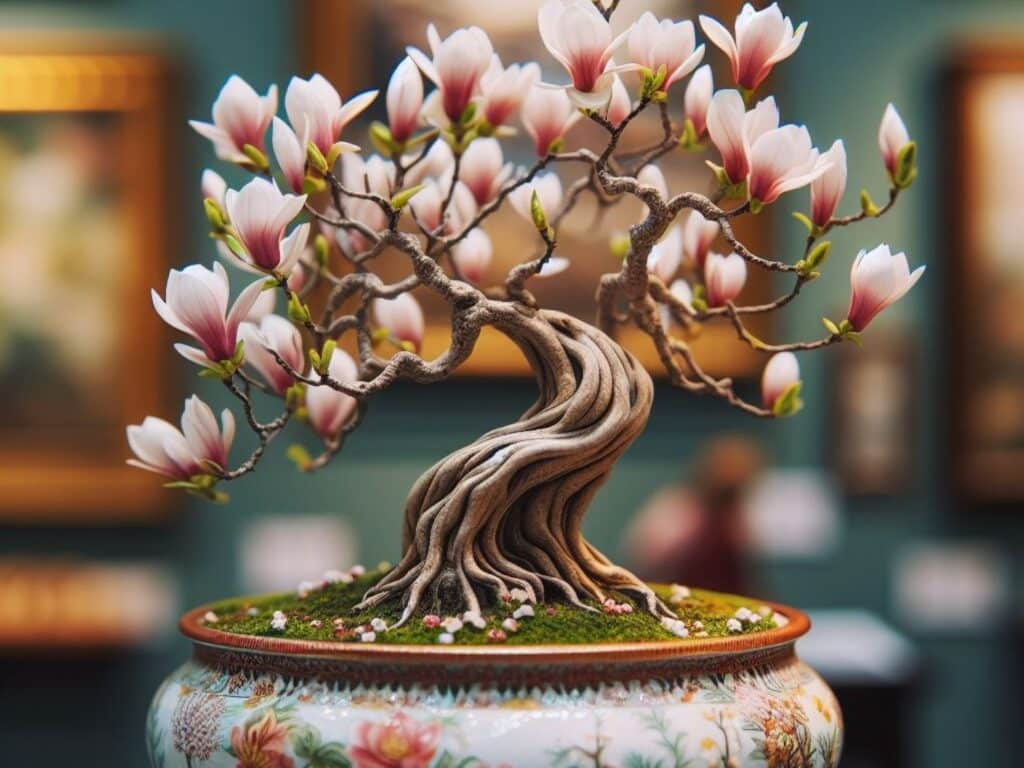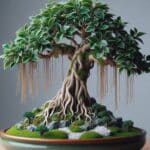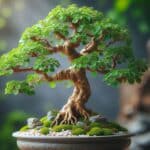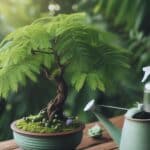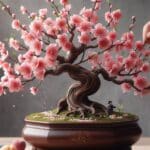Flowering bonsai trees are prized possessions because their beautiful flowers and graceful structure can add great interest and color to interiors or garden spaces.
The magnolia bonsai (Magnolia stellata) is an especially charming flowering plant to grow or collect because the star-shaped flowers of this little tree symbolize beauty, purity, and longevity.
These charming trees with breathtaking blooms are pretty easy to care for but, sadly, are not the easiest bonsai species to grow and establish. They are slow-growing trees and are quite fussy about their environment. Growers must also be very careful when pruning and shaping these magnificent trees.
Even though it might be difficult to grow a magnolia bonsai, it is still a very rewarding experience. Nothing is more thrilling than seeing your little magnolia bloom for the first time, and they only become more beautiful as the years progress.
In this guide, we will show you how to grow a star magnolia and share some helpful tips on the best way to shape, prune, and care for these trees.
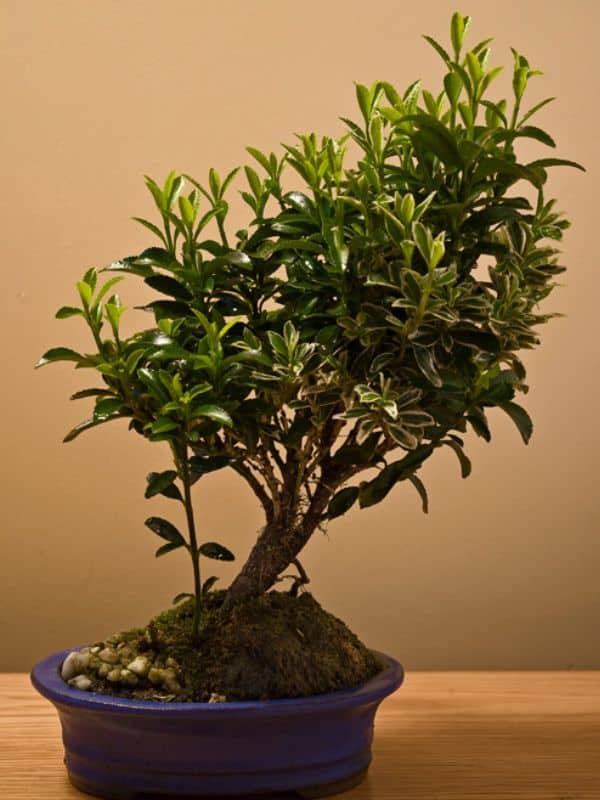
Plant Facts
| Scientific name | Magnolia stellata |
| Common names | Star Magnolia, Bonsai Magnolia |
| Family | Magnoliaceae |
| Plant Type | Flowering Tree, Ornamental Plant |
| Height and Width | 15 – 20 ft. tall (natural), 1 – 3 ft. tall (bonsai) |
| Origin | Native to Japan |
| Flower colors | White or pink |
| Foliage color | Dark green, bronze, or yellow depending on the season |
| Sun Exposure | Minimum of 4 hours of direct sunlight |
| Soil Type & pH | Well-drained, acidic soil, loam soil enriched with humus |
| Special features | Low Maintenance. Good for Containers. Slow growing. Difficult to Bonsai. |
What Does a Magnolia Bonsai Look Like?
Star magnolia bonsai trees typically grow about 1.6 feet tall and have delicate, narrow foliage. The deciduous tree can appear quite different throughout the year.
These flowering trees bloom in late winter to early spring and will be covered in beautiful white or light pink star-shaped flowers. When the fragrant flowers are shed, the little tree will be covered in dark green foliage. This foliage will transform into yellow or brown hues before they fall off in autumn.
The bark of these trees tends to be light grey with a smooth appearance, and these small trees tend to form lots of delicate branches.
Where Does Magnolia Bonsai Trees Grow?
Star magnolias are native to Japan and originate from the highlands of the Japanese island of Honshu.
These types of bonsai trees are typically grown indoors because they are a bit sensitive to heat and frost. They can also be positioned outdoors in cooler climates during the warmer seasons but should be brought indoors for the colder months or protected from scorching sun rays during hot summers.
How to Grow a Bonsai Magnolia
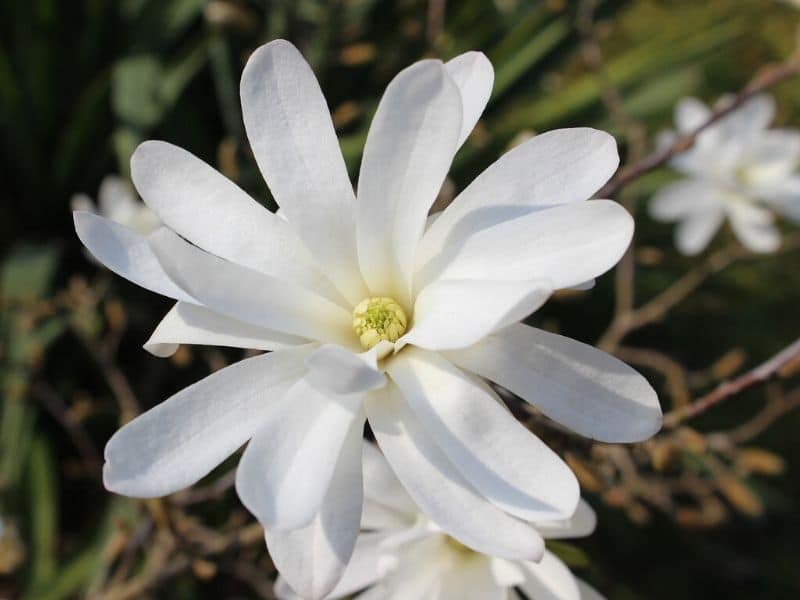
Magnolia bonsai trees are relatively easy to grow and care for but can be challenging to prune, shape, and train. Let’s look at how to develop this unique flowering bonsai.
Propagation
The easiest way to propagate magnolia trees is by growing them from cuttings. Here are the steps for cultivating your own miniature tree from a small cutting.
- Choose a healthy semi-hardwood branch and snip it off at a 45-degree angle. The cutting should be about 4 – 6 inches long.
- Remove all leaves from the bottom half of the cutting and only leave a few leaves at the top.
- Dip the end of the cutting in rooting hormone.
- Fill a tiny pot in well-drained potting soil mix and plant the cutting.
- To create a greenhouse effect, you can cover the pot with a clear plastic bag or create a clear dome from an old plastic bottle. This will retain some humidity so your cutting won’t dry out.
- Keep the soil moist for the next 4 – 12 weeks.
- Once the cutting established roots, you can gradually remove the plastic cover and gradually expose your cutting to a little bit more sunlight.
- When the cutting is strong and healthy, it can be transplanted into a bonsai pot, and your bonsai journey can begin.
Soil
A bonsai tree should be planted in light, sandy soil that drains well. It is best to establish your small tree in a bonsai soil mixture. Bonsai soil with a mixture of Akadama, pumice, and organic matter is best.
Magnolia trees prefer slightly acidic soil but can grow in neutral to slightly alkaline soil types. These trees will grow well in sandy, loam, or clay soils, but it is essential to ensure that your soil drains well, and you should avoid soil that will compact too much.
Pruning
All magnolia bonsai tree varieties, including magnificent magnolia bonsai should be pruned in early spring before the new growth begins. These trees shouldn’t be pruned too heavily.
Start by removing dead or damaged branches and remove crossing or crowded branches. You should try to create a balance in your tree with even spacing between branches.
Unwanted shoots can be gently pinched off with your fingers throughout the growing season.
Wiring
You might need to wire your bonsai tree to achieve a more desired shape. It is usually best to wire a magnolia while it is dormant.
For wiring, you will need aluminum or copper bonsai wire. The wires should be coiled around all branches that you want to modify. Afterward, the branch structure can be bent into a more suitable shape.
Bonsai wires should be removed for this slow-growing tree after 6 – 12 months and before the wires start biting into the bark.
Repotting and Transplanting
Early spring is the best time to repot or transplant a magnolia bonsai. Here is what you will need:
- A clean pot with drainage holes
- Some fresh soil mixture
- Root pruning scissors
- A root rake
- A watering can
Start by preparing your new pot and add some soil to the container. Next, unpot the bonsai tree and gently loosen the soil around the root system.
Inspect the roots and remove any damaged roots or roots that might show signs of pests or root rot. It is recommended to remove about one-third of the entire root system before planting the pot again.
After pruning the roots, you can plant the tree inside the new bonsai pot. Press the soil firmly to remove air bubbles, and water the plant thoroughly.
It is best to keep the soil moist until the root system recovers.
How to Care for a Bonsai Magnolia Tree
Good aftercare is crucial when growing magnolia bonsai. These trees are a little bit particular regarding their positioning. Lots of gardeners will advise you not to position your little tree among other plants because the tree prefers open space.
Here are some other care tips to help you take good care of your tree.
Water
These trees do not require frequent watering. They require most water during their growing season and while they bloom, but watering should be reduced during the colder months.
Growers recommend that these trees should only be watered once a week when it is cold, but it can be watered more often during warm weather. The root ball of this tree should never be allowed to dry out fully.
It is important not to overwater magnolias because they can develop root rot or fungal diseases if kept too wet.
Sunlight
Species of the magnolia genus prefer direct sunlight and need a minimum of four hours of direct sunlight per day. They flower much better if they get more than 4 hours of direct sunlight and won’t flower if they don’t get enough sun.
It is best to position your tree in a sunny window where it will be protected from cold but might get enough direct light.
Temperature and Humidity
Magnolia bonsai trees prefer higher humidity levels of over 50%. Indoor spaces usually don’t have enough humidity to accommodate these trees. If you keep your tree indoors, place it in a pebbled tray filled with water (humidity tray) to raise the humidity levels.
These trees are pretty hardy and will grow well even at temperatures as low as 14 degrees F but they should be moved indoors if the temperatures drop below this point. They should be protected from heat at temperatures of over 45 degrees F, and they also need protection from chilly winds and frost.
Fertilizer
During its bloom and growing season, this plant can be fertilized with a nitrogen-rich fertilizer once a week. Once the blooms fall off, you can reduce fertilizer and only offer a solid organic fertilizer about once a month or a liquid fertilizer once a week.
There is no need to fertilize younger trees or newly planted magnolias because the new soil should have enough nutrients to support the plant until the following growing season.
Pest and Diseases
Magnolias are rarely affected by pests and diseases. A simple organic insecticide or pesticide should be enough to keep your small tree protected from infestations.
Root rot is one of the most common issues for these trees because growers tend to overwater them. If the leaves of your plant turn yellow, then adjust the soil’s pH level or your tree might need a little bit more direct sunlight.
Common Varieties and Cultivars for a Magnolia Bonsai
The star magnolia is the most popular tree variety to bonsai because it is naturally smaller, has thinner twigs, and the foliage is more delicate. There are, however, a couple of other varieties that can also be used to produce beautiful bonsai creations. Here is a quick look at the best magnolia varieties for bonsai creations.
- Star Magnolia (Magnolia stellata)
- Purple Magnolia (Magnolia liliilora)
- Southern Magnolia (Magnolia grandiflora)
- Saucer Magnolia (Magnolia x soulangeana)
- Jane Magnolia (Magnolia x ‘Jane‘)
- Kobus Magnolia (Magnolia kobus)
Conclusion
Magnolia bonsai trees are not the easiest to grow, but it is very rewarding to see them grow strong and produce vivid blooms. The fragrant flowers are very captivating to look at and are sure to brighten up any space.
We hope you found this helpful guide, and we are sure that your little tree will grow healthy and strong if you follow the tips we shared.
Up next:

